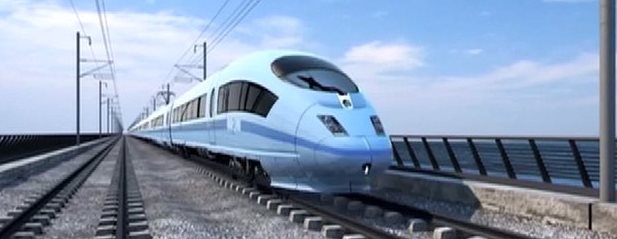High Speed Rail has no shortage of enemies. It is challenged for having rising costs, too few benefits and for being the plaything of vested interests, such as local authorities and rail companies. These are often cheap shots, based on what sometimes appears to be a wilful misunderstanding of what HS2 is actually about, though I do admit that proponents have not covered themselves in glory either.
The National Audit Office opined that since the objectives had not been clearly stated, then the evaluation could not be judged as acceptable or otherwise. This is indeed true. A fundamental reason for this lack of clarity about objectives lies in our political economy, which has buried an ability to make a judgement based on the balance of risks. The risks here are the future of the economy and what it needs to improve, grow and trade.
For many years, public investment decisions have been based on an assumption that all profitable investments will be made by others, and that investments in, for example, transport will not make any difference to the economy, merely to consumers’ ‘welfare’. Even though this assumption is palpably untrue, especially in periods of structural change, the procedures based on it are routinely described as ‘tried and tested’. The welfare analysis that results is able to assume the future economy as a given, with no uncertainty about its delivery.
In the real world, this is of course nonsense. The consequences of an investment are always unknown, and decisions require a balance of judgement of risk. This applied to early investors in the railways, many of whom lost their shirts when passenger numbers were not as forecasted. Their loss was however the economy’s gain in the longer run as railways made possible the industrial economy. This brings to mind the Channel Tunnel and High Speed 1; it has made possible investments which generate longer term benefits than investors expected, but not on a time scale that helped them much. My analysis of HS1 shows that if as little as 10 per cent of the jobs developed around its stations owe their existence to the railways, it has paid for itself in output terms.
Could HS2 have the same effect? This is the question which needs to be asked. It is much more pertinent than to compare cost benefit ratios based on welfare funny money. Of course large projects have less certain outcomes; they take longer and costs will be harder to control. But they might have relatively larger benefits too. The real benefits of transport infrastructure investment will be felt in trade and the opportunities to grow markets. If these exist, and if investors and policy makers exist to take advantage of such opportunities then HS2 can support the economy. If not, not.
It is cited as a criticism that HS2 is supported by the likes of Manchester and other cities – but this seems to me to be an important plus if such cities also have plans for how to take advantage of such an investment. Comparing international investments in rail, it is clear that much depends on how the railway is used. Yet none of the modelling so far presented has clarified this. My judgement is that the plans being developed by cities linked by the new railway will make possible new trade and market involvement that will create jobs and generate incomes to justify the investment. This is the kind of analysis suggested by my recent paper for HS2.
I’d like to see us think about whether the wages, profits and taxes generated by the investment are sufficient to more than pay back the costs of the infrastructure, including both capital and interest. If they do, then the principle is fine, but we now need the right mechanisms.
In a private sector world, this is contractual. Planning constraints mean that the private sector is not left to its own devices, and indeed it never was in the railways. The public sector has to orchestrate, balance vested interests, and probably provide much of the finance, given the planning uncertainties.
The other missing link in our analysis therefore is payback and risk. When Joseph Bazalgette proposed sewers for London, he made them more than twice as large as necessary. He wanted to cover the risk of later capacity. Thank goodness he did. He paid for them with a mixture of private and public finance. Private money can take a stake where there is a return over which the investor has some control, but can’t cover the uncertain.
Unless we are prepared to take some bets on creating a future for our economy, we will be left behind by the competition. Staying ahead means investing and continuing to improve our communications and trade – and that means better railways.
